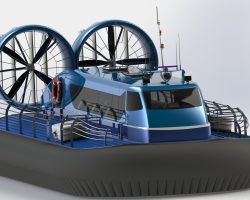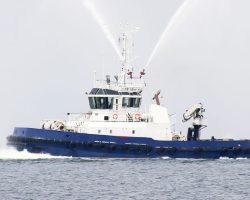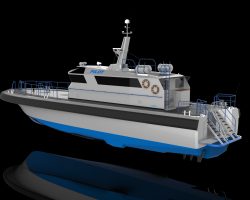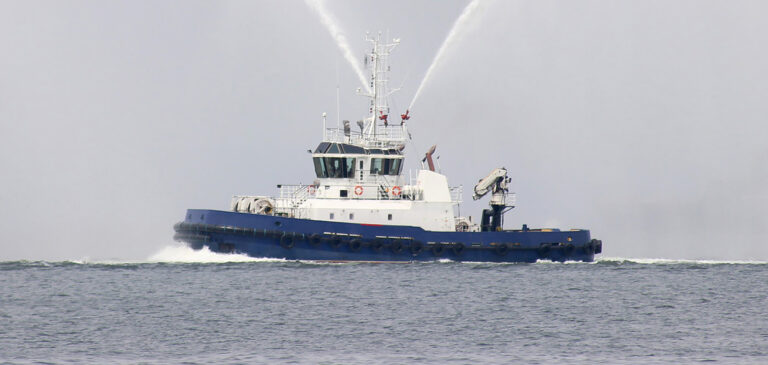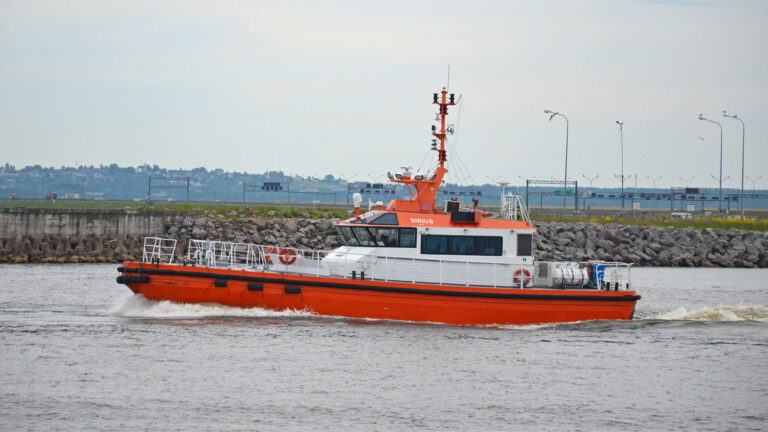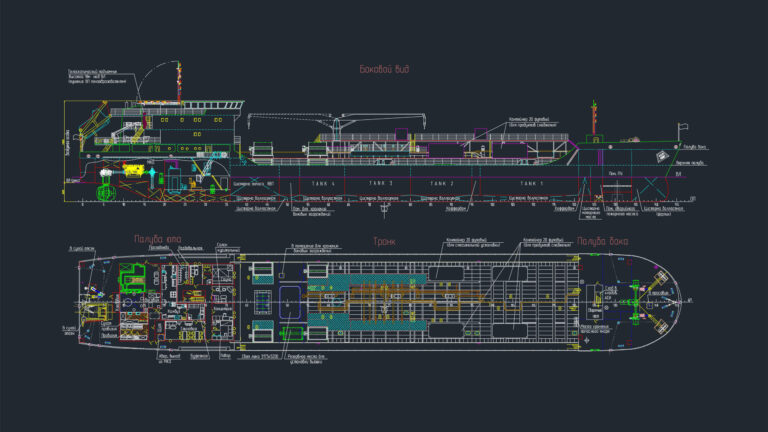Design PS-45 (Multipurpose Maritime Support Tug)
The architectural and constructional type of the vessel is steel, single-hull, welded, twin-screw (2 fully rotating azimuth thrusters with an exposed drive), single-deck with an elongated forepeak tank, an open upper deck with a superstructure shifted towards the bow, and a two-tier pilothouse. The engine compartment is located in the middle of the ship, powered by a twin-shaft diesel power plant that operates the fully rotating azimuth thrusters, equipped with a bow thruster of the “tube propeller” type, and has five transverse watertight bulkheads reaching up to the bulkhead deck, dividing the ship into six watertight compartments. On the aft deck, using container fittings, it can carry 13 standard 10-foot containers or 6 standard 20-foot containers, including 2 20-foot containers with specialized diving equipment.

